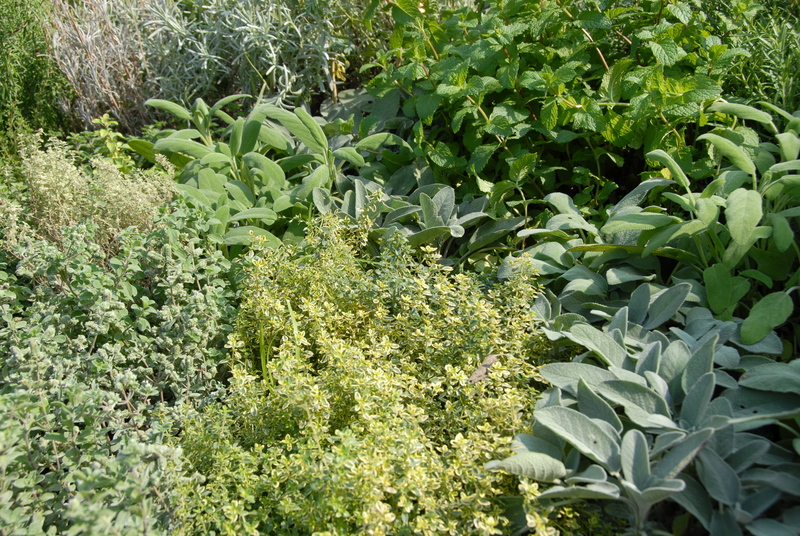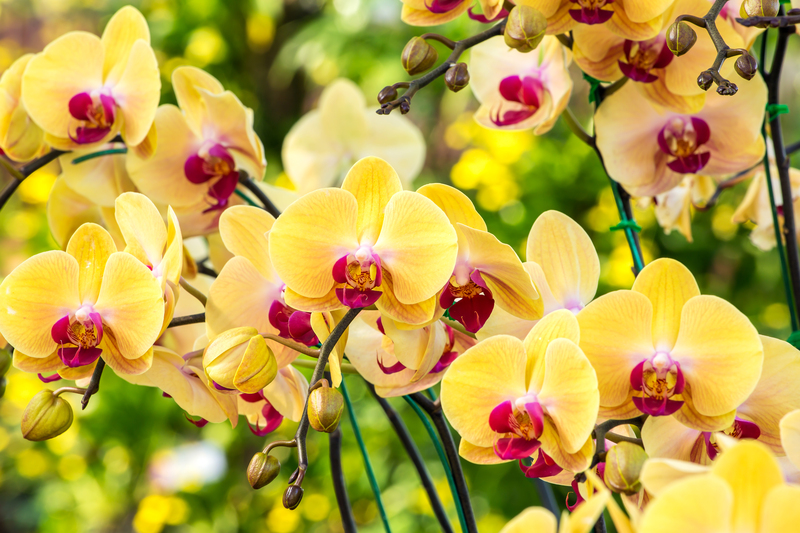Where to Start Your Neglected Garden's New Journey
Posted on 11/09/2025
Where to Start Your Neglected Garden's New Journey
Has your once-beloved garden lost its spark? If your yard has become overgrown, cluttered with weeds, and lacking the beauty it once held, don't worry--you are not alone. Many homeowners end up with a neglected garden at some point. Life gets busy and gardens fall by the wayside. The good news? Reviving your forgotten green space is entirely possible. This comprehensive guide explores where to start your neglected garden's new journey, offering actionable steps, expert tips, and inspiration to help you transform your outdoor area into a thriving, beautiful retreat once again.

Recognizing the Signs of a Neglected Garden
Before digging in, it's important to honestly assess the current state of your garden. Signs that your garden needs a fresh start might include:
- Overgrown grass and weeds crowding flower beds
- Diseased or dead plants and shrubs
- Cluttered, broken or outdated garden furniture and decor
- Hard compacted soil, poor drainage, or bare patches
- Loss of garden structure or forgotten plant labels
- Faded pathways and hidden borders
Understanding where your garden currently stands is the key starting point of your refurbishing journey.
Step 1: Visualize Your Garden's Potential
Imagine the Possibilities
Before grabbing your shovel, take a moment to dream. Walk around your garden and imagine what you want it to look like. Visualizing your neglected garden's transformation sparks motivation and helps you make wise decisions going forward.
- What style appeals to you--cottage, modern, wildlife-friendly, or low-maintenance?
- How much time and resources do you wish to invest?
- Do you want to grow edibles, create a play area, or craft a tranquil retreat?
Snap some before photos for reference and future comparison. Sketch a simple layout if it helps you organize your thoughts. Remember: The journey from neglected to beautiful begins with a vision.
Step 2: Clearing the Canvas: Clean Up First
Why Cleanup Matters in Garden Renewal
One of the first places to start with your neglected garden is the big cleanup. Removing clutter, weeds, dead plants, and garden debris instantly makes the space more manageable and prepares it for future planting and designing.
- Prune and Remove: Cut back dead or dying branches, dig out unhealthy plants, and trim unruly shrubs.
- Weed Thoroughly: Pull up weeds from roots for best results. If weed growth is severe, consider a weed barrier or cover cropping for temporary control.
- Rake and Remove Garbage: Collect leaves, twigs, old pots, broken garden decor, and trash. Dispose or recycle responsibly.
- Clear Paths: Uncover any paving, stepping stones, or pathways hidden under overgrowth.
This stage can feel overwhelming, so break it into small, manageable areas. Set aside a weekend or a few evenings for this essential first step in restoring your garden's health and beauty.
Step 3: Assess Soil Health and Improve Foundations
The Importance of Good Soil
The heart of any thriving garden is its soil. After clearing, take time to test and amend your soil for a robust gardening journey. Common issues in neglected gardens include poor fertility, compacted earth, and lack of organic matter.
- Test Soil Quality: Use an at-home kit or local extension service to check for nutrients and pH.
- Amend as Needed: Mix in compost, well-rotted manure, or organic matter to boost fertility. Sandy or clay soils benefit from additional organic content.
- Loosen Compacted Areas: Use a garden fork or aerator to improve drainage and root growth.
Investing in soil now sets the stage for everything you plant in the future. Don't skip this step on your garden's new journey!
Step 4: Plan Your Plantings and Prioritize Projects
Smart Planning for a Successful Garden Makeover
This is the fun part. With a blanker, cleaner canvas and healthy soil, you're ready to shape the new garden you've envisioned. Here's how to prioritize your upgrades and set your neglected garden's journey off right:
- Start with Structure: Trees, shrubs, and hedges define spaces and provide year-round interest.
- Add Layers: Introduce perennials, grasses, and bulbs for texture and color variety. Fill in with annual flowers if you want instant results.
- Plan Functional Zones: Designate areas for seating, paths, a vegetable patch, or wildlife habitat.
- Work in Stages: Large projects are less daunting when divided into manageable sections. Prioritize one garden bed or area at a time.
Tip: Choose resilient, low-maintenance plants suited to your climate and garden conditions, especially if you're short on time or just starting out.
Step 5: Restore Hardscaping and Garden Features
Don't Forget the Details
Neglected gardens often have faded patios, crumbling borders, and broken ornaments. Give your space a lift by addressing these areas:
- Refresh Pathways and Edging: Clean, repair, or replace paving stones, bricks, and timber borders.
- Upgrade Seating: Sand and repaint wooden benches, clean or switch up garden furniture, and add comfy cushions.
- Fix and Clean Water Features: Remove algae and repair pumps or liners in water features.
- Add Lighting: Solar garden lights and lanterns make gardens welcoming and usable after dusk.
- Reposition or Update Ornaments: Even simple repainting can bring garden gnomes, pots, or bird baths back to life.
Step 6: Begin Planting and Mulching
The Thrill of Filling Your Garden with Life
With the groundwork prepared, it's finally time to plant. Follow your new garden plan, set in your plants, and firm them in. Water thoroughly after planting.
- Mulch Beds: Mulching not only tidies your borders but also conserves moisture and suppresses weeds--key for a garden that's recovering.
- Don't Rush: Plan to add plants in phases if budget or time is limited--growing a garden is a journey, not a race.
Step 7: Establish a Maintenance Routine
Keep Your Garden on Its New Path
To keep your reinvented space flourishing and avoid another round of neglect, establish simple, consistent routines:
- Weekly Check-Ins: Spend 10-20 minutes pulling weeds, deadheading flowers, and checking for pest issues.
- Seasonal Tasks: Prune, feed, and tidy up as needed each season for health and appearance.
- Water Wisely: Focus on deep watering early in the day; newly planted beds are especially thirsty.
- Stay Flexible: Adjust as your garden matures and your interests change.
Remember, the most beautiful gardens are those that are loved all year round--even just a little bit at a time.
Creative Ideas for Your Garden's Fresh Start
You've set your neglected garden on its new journey--now what? Here are some creative ideas to consider as you continue to improve and enjoy your reimagined space:
- Wildlife Corners: Install bee-friendly flowers, bug hotels, or a bird bath to welcome nature.
- Edible Delights: Plant herbs, vegetables, or a fruit tree for a productive twist.
- Colorful Containers: If your soil is poor, use pots for annual and perennial displays.
- Vertical Gardening: Wall planters or trellises add instant impact and save space.
- Children's Zones: Dedicate a mini patch for kids to dig, plant, and play.
Personalizing your garden connects you to your space and encourages you to keep nurturing it for years to come.
Essential Tools for Reviving a Neglected Garden
Having the right tools can make a world of difference as you embark on your garden restoration project. Essentials include:
- Spade and Fork: For digging, turning soil, and planting.
- Hand Trowel and Pruners: For smaller tasks and precision jobs.
- Rake and Hoe: For clearing debris and weeding garden beds.
- Wheelbarrow: Indispensable for hauling waste, soil, or mulch.
- Gloves and Sturdy Boots: Protect hands and feet from thorns, stones, and uneven ground.
Invest in quality tools--they save time, reduce effort, and help you enjoy working in your garden more.

Frequently Asked Questions: Jump-Starting Your Garden's New Life
How Long Does It Take to Revive a Neglected Garden?
The timeline depends on the garden's original condition and your commitment. You can make a visible difference in a single weekend with a good cleanup, but transforming your neglected garden's journey into a flourishing landscape takes continuous care across several seasons.
What Plants Are Best for a Revived Garden?
Choose hardy, low-maintenance plants that suit your soil and light conditions. Think shrubs like hydrangeas, buddleia, or viburnum, long-blooming perennials, native wildflowers, and resilient groundcovers.
What If My Soil Is Very Poor?
Don't despair. Focus on adding organic matter, mulch, and slow-release fertilizers. Consider raised beds or container gardening as a shortcut to successful planting while improving the main ground.
Conclusion: Let Your Garden's New Journey Begin
Every garden deserves a second chance. Starting your neglected garden's new journey might seem daunting at first, but each small step brings you closer to a revitalized outdoor haven. Remember to:
- Visualize your garden's potential
- Begin with a thorough cleanup
- Heal and improve your soil
- Plan your planting thoughtfully
- Restore paths, patios, and features
- Plant, mulch, and nurture with regular care
Embrace the process, celebrate small victories, and watch as neglected beds buzz with life once more. Your garden's new journey starts today--grab your gloves and let the transformation begin!
If you found this guide helpful, explore our other articles on garden restoration, landscape design, and organic gardening tips for even more inspiration.



